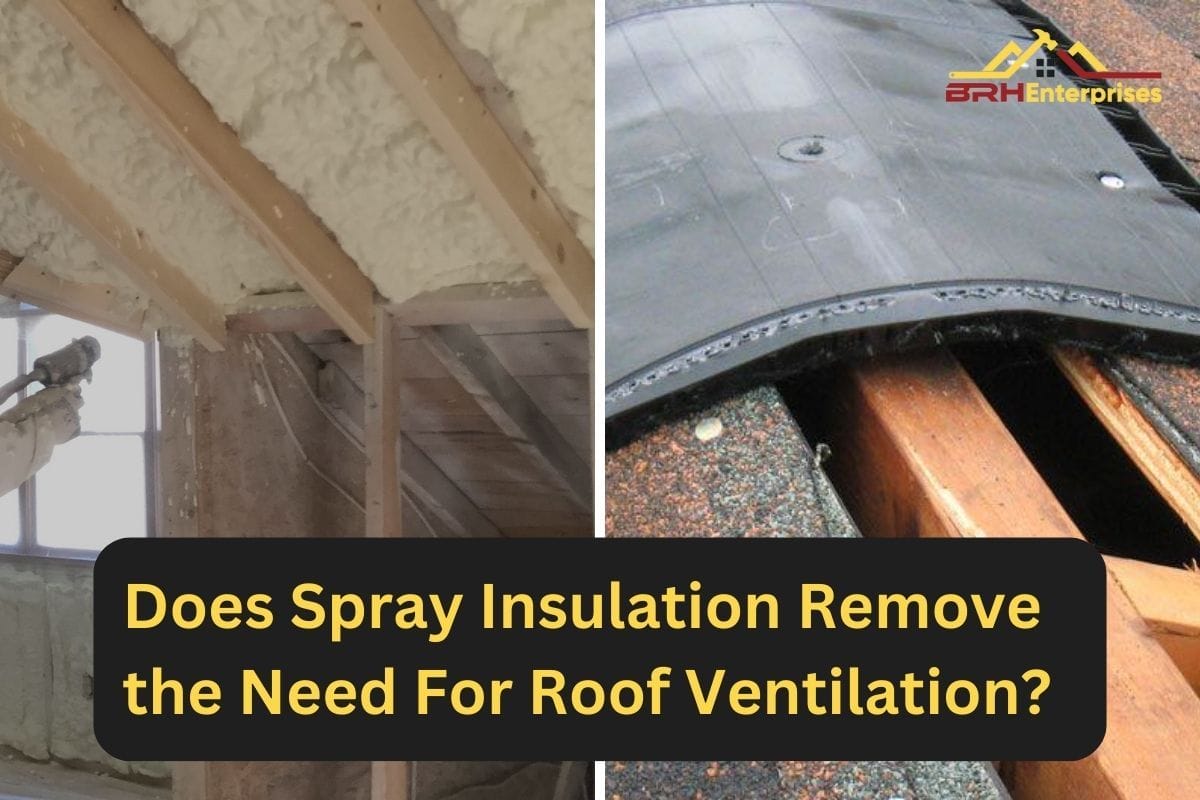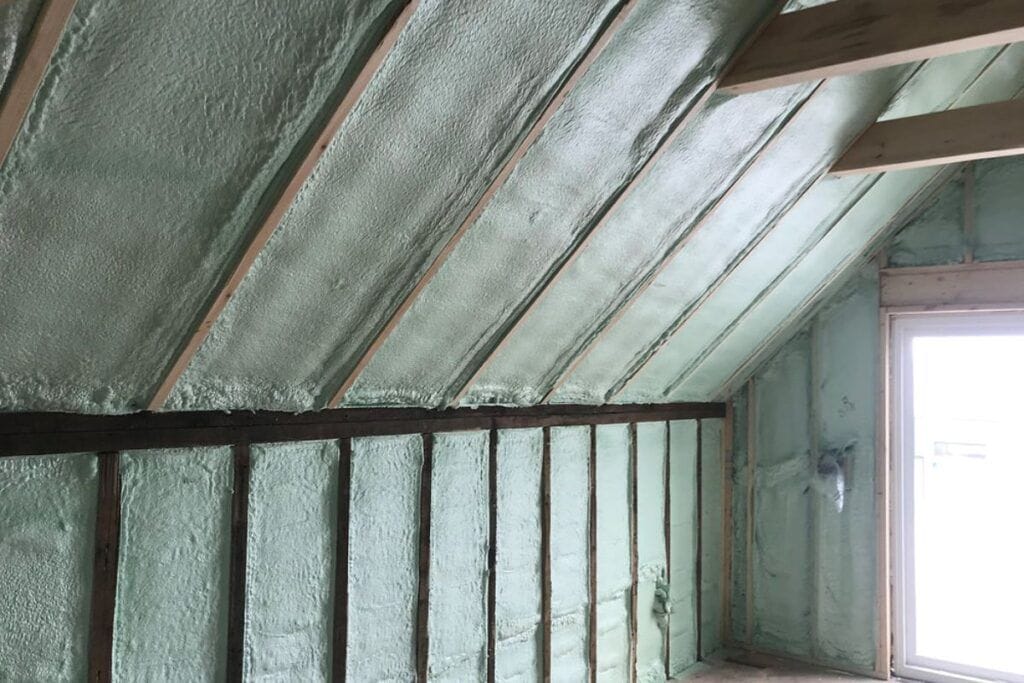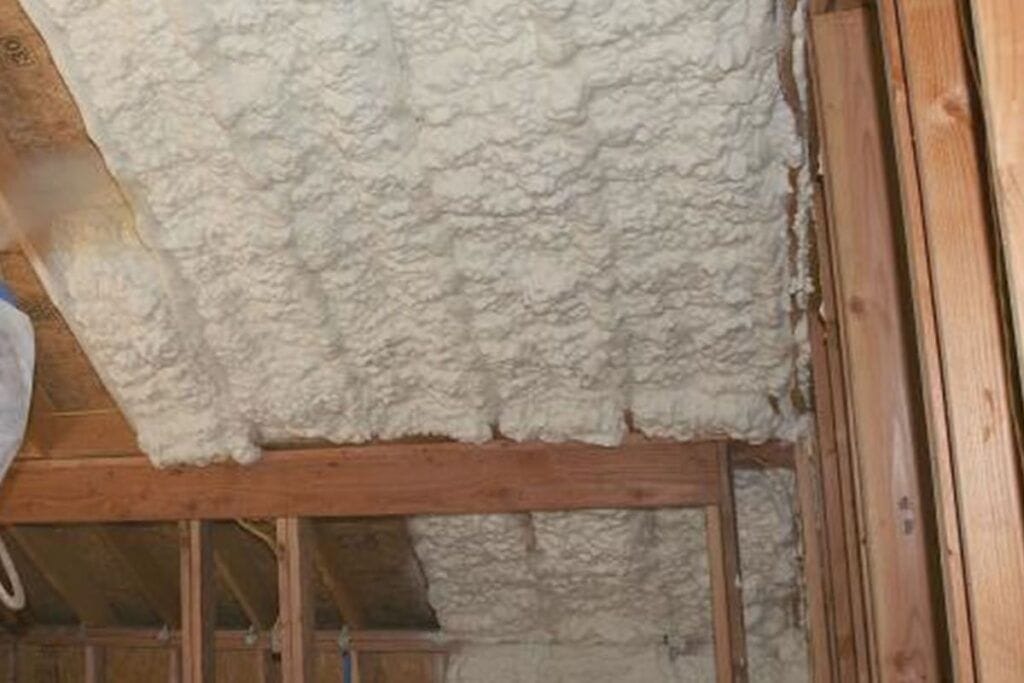Does Spray Insulation Remove the Need For Roof Ventilation?
Estimated Reading Time : 4 Min.

You might have heard about the exceptional performance of spray foam insulation. But with its incredible performance, many homeowners wonder if spray foam insulation removes the need for roof ventilation. If you also want to know the answer, you are in the right place!
However, before we answer the question, you need to know some basics first, such as the role of spray foam insulation, the types available, and the role of roof ventilation. Read this blog post till the end so that you don’t miss out on anything important.
Understanding Spray Foam Insulation And The Types Available
Spray foam insulation, also known as spray polyurethane foam (SPF) insulation, is a type of insulation material that is applied as a liquid and then expands when it hardens. It is a versatile and effective insulation option for residential, commercial, and industrial construction.
There are two main types of spray foam insulation:
Closed-Cell Spray Foam

Closed-cell spray foam is dense and rigid when it expands. It consists of cells that are completely sealed, stopping the passage of air completely. Closed-cell spray foam provides a high R-value per inch (a measure of insulation’s thermal resistance) and is often used in applications where a higher R-value is required.
Open-Cell Spray Foam

Compared to closed-cell, open-cell spray foam is less dense and has an open-cell structure. It provides a good R-value but is not as effective at blocking moisture as closed-cell foam. Open-cell spray foam is often used in interior applications, such as wall cavities and attics, where a vapor barrier is not needed.
The Role of Spray Foam Insulation
1. Thermal Insulation
As said earlier, spray foam insulation is primarily used to create a thermal barrier that reduces heat transfer between the interior and exterior of a building. It has a high R-value, which measures its thermal resistance. This high R-value means that it is very effective at reducing heat transfer and maintaining a comfortable indoor temperature. This results in reduced heating and cooling costs.
2. Airtight Sealing
One of the unique features of spray foam insulation is its ability to create an airtight seal. When applied, it expands to fill gaps, cracks, and irregularly shaped spaces, which makes it effective at sealing air leaks. This prevents the passage of outside air, which can lead to energy loss and reduced indoor comfort.
3. Moisture Control
Closed-cell spray foam insulation also acts as a moisture barrier. It helps prevent the intrusion of water vapor and moisture, which can lead to issues like mold growth, wood rot, and structural damage. This is particularly important in areas prone to high humidity or extreme temperature fluctuations.
Roof Ventilation And Its Role
Like roof insulation, roof ventilation also plays a crucial role in maintaining the health and performance of a building’s roof. It involves the deliberate design and installation of openings, such as vents, in the roof and attic space to allow for the free exchange of air between the interior and exterior of the building.
1. Moisture Control
Moisture can enter the attic from various sources, such as indoor activities (cooking, bathing) and moisture from the ground or air outside. If left uncontrolled, moisture can lead to problems like mold growth, wood rot, and roof condensation. Proper ventilation allows moist air to escape, preventing these issues.
2. Temperature Regulation
Ventilation helps regulate the temperature in the attic or roof space. In the summer, it allows hot air to rise and escape, reducing the risk of the attic becoming overheated.
This prevents the transfer of excess heat to the living space below and reduces the workload on a home’s HVAC system. In the winter, ventilation helps maintain a more consistent temperature, which can prevent the formation of ice dams on the roof.
3. Air Quality
One of the key roles of roof ventilation is to regulate the inside air and expel the dry and warm air. It can also help prevent the accumulation of volatile organic compounds (VOCs) and odors that can infiltrate the living space.
Is Spray Foam Insulation Equal To Roof Ventilation?
Spray foam insulation is NOT the same as roof ventilation. While the key roles of spray foam insulation and roof ventilation are similar, they are primarily different in mechanism and functionality. Just like spray foam insulation can’t vent out the warm and humid air, roof vents can’t insulate the attic.
This means that it’s necessary to include roof ventilation with your spray foam insulation. Together, insulation and ventilation work in combination to keep your roofing system in good condition, and also increase its lifespan.
You can choose from different types of roof vents as well to pair with your spray foam insulation:
Ridge Vents: Installed along the ridge of the roof, ridge vents exhaust moist and warm air from the attic. They work in conjunction with soffit vents, maintaining the proper level of air circulation within a building.
Soffit Vents: Located under the eaves of a roof, soffit vents introduce fresh outdoor air into your attic, creating a harmonious system of air circulation when combined with ridge vents. Soffits vents are also known as intake vents.
Gable Vents: Situated at the gable ends of your home, these vents promote effective cross-ventilation, helping maintain optimal interior conditions.
Final Thoughts
Spray foam insulation is a revolutionary method that has the potential to eliminate the need for roof ventilation in many situations. With its air-sealing capabilities, moisture control, and exceptional insulation properties, it’s a game-changer in the world of home insulation. However, pairing attic ventilation with insulation creates an optimal environment that promotes the longevity of your roofing system and prevents issues such as moisture from occurring and damaging your roof. But in the end, the choice of adding roof ventilation depends on what works for your home and the climate you live in.
Contact BRH Enterprises In Wisconsin For Your Roofing Needs
Whether you want to install spray foam insulation or roof ventilation, the decision rests completely on the needs of your building, local building codes, and the climate in your area. Hiring a local roofing contractor, like the team at BRH Enterprises, is one of the best choices you could make to ensure your home receives the best service. Contact us today for a roof inspection at (920)-249-4228, and consult with one of our roofing professionals about your specific roofing needs.


